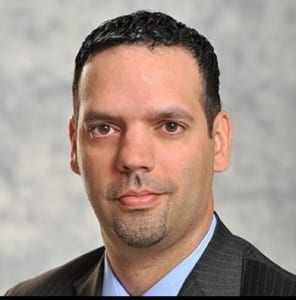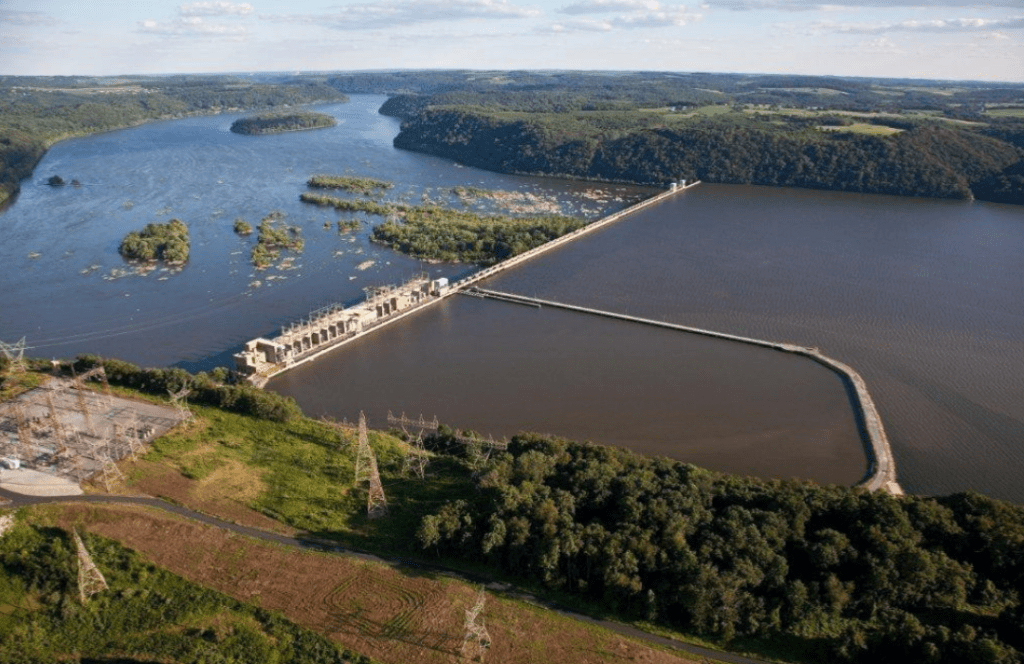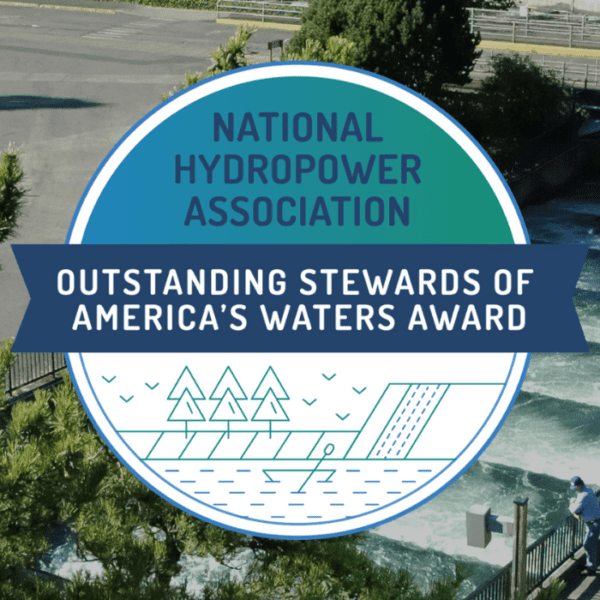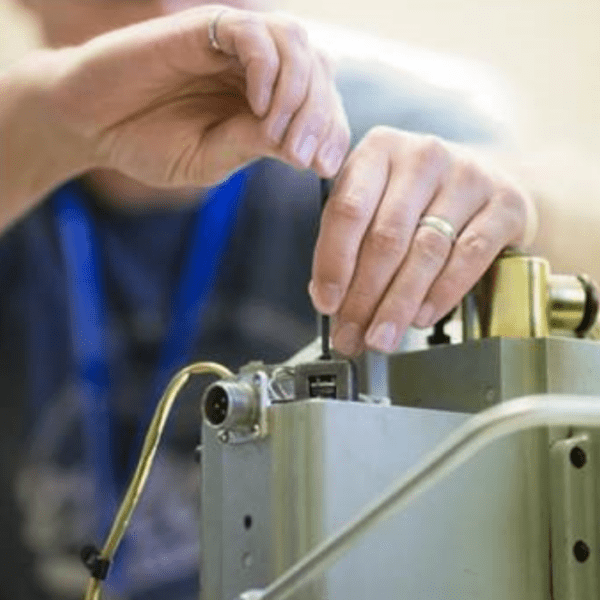Innovation is defined as a new idea, method, or device. Application of innovation often is the way to solve challenges and move something forward. How can innovation advance the waterpower industry?
To answer that question, the National Hydropower Association (NHA) recently asked Jose Zayas, senior vice president of innovation and partnerships at Eagle Creek Renewable Energy, which owns and operates 85 hydro facilities totaling 650 MW, to moderate a discussion with four leaders in the waterpower industry.
The leaders are:

José Zayas, Senior Vice President, Innovation and Partnerships, Eagle Creek Renewable Energy

Vince Bryan III, founder and CEO of Whooshh Innovations

Paul Gay, vice president at SMI, Inc. (Strategic Marketing Innovations) and co-chair of NHA’s Marine Energy Council

Debbie Mursch, director of markets and strategy – Hydro at GE Renewable Energy

Gia Schneider, co-founder and the CEO of Natel Energy
During the discussion, these leaders shared their views on innovation and why it’s necessary for the continued strength and growth of conventional hydropower, pumped storage, and marine energy.
The questions and answers below were excerpted from a January 2021 Waterpower Innovation Forum organized by NHA. The full recording of the virtual forum is available on the NHA website.
Question 1
Jose Zayas: What are innovations you personally think are key in hydropower and/or marine energy that will lead to being able to create and/or cement the role of waterpower in our energy landscape?
Debbie Mursch, GE Renewable Energy: What a great opportunity we in this industry have to supply solutions for energy storage. The challenge is cost. We have to find ways to reduce the cost of providing storage. Even though we’ve made some great strides, we still have a way to go. Just to give you an example, with a pumped-storage development, 40 percent of the cost is civil. That’s where much of the risk is – you may not know geotechnical conditions until you actually start construction. So, innovations that will lead to reduced costs of civil construction are key.
Gia Schneider, Natel Energy: I 100% agree with Deb’s comments on the need to drive down civil works costs, not just for storage, but also for other forms of new hydro as well. I think another area for innovation — which is critical and ties into the thought process around how do we get more out of our hydropower fleet from an operations perspective — is the opportunity around what’s happening with grid edge controls. Of great opportunity is applying artificial intelligence (AI) machine learning to tackle the various aspects of what we need to be able to have to operate hydropower projects more effectively to integrate wind and solar into the grid. This is an area where innovations can be implemented that don’t require, relatively speaking, as much upfront capital cost. There’s opportunity to get better data and use better analytics to improve operations and revenue.
Vince Bryan III, Whooshh Innovations: I totally agree with Gia’s data comments, and I think that actually ties into an entire watershed. So, starting to think about the watershed, not just a single project. I also think there’s a role for innovation in terms of adding a hydropower component at existing dams in order to fund needed fish passage. At many existing dams in this country, there’s a need for fish passage. But, the owners of those structures many not have financial resources to provide the needed technology to pass the fish. Adding hydropower can help solve that problem by providing a revenue stream to fund the fish passage.
Paul Gay, SMI: In addition to everything everyone else that has been said, I would just add some good old-fashioned research, development, validation and deployment is needed for marine energy. The technologies are still not commercialized. So, everything that’s involved with the deployment is innovation. An atmosphere of collaboration involving the federal government’s national laboratories, university researchers, and private development companies all working together to deploy technologies is critical.
Question 2
Jose Zayas: A lot of good innovation dies because it doesn’t have the opportunity to get demonstrated either at scale or with the right audience. How can we get better at that? Gia, speaking from your personal journey, can you describe the importance of demonstrating viability to the right audience?
Gia Schneider: Demonstration is critical at the end of the day for new solutions in general, but particularly when we’re talking about new hardware solutions. We have to get demonstrations to the point where we are able to then have project finance mechanisms – ultimately, bankability.
If you can’t achieve bankability, it’s almost impossible, frankly, to unlock an accelerating scale and it becomes this kind of positive feedback loop in an unfortunately negative way. If you can’t unlock accelerating deployment scale, you can’t do cost out.
Another question that we often have faced is size, because demonstrations need to be at a certain size to then translate to bankability, to then unlock deployment scale, to then create a positive feedback loop — in a positive way — to drive down cost.
The bottom line is that doing things repeatedly is a part of the cost-out process. Innovation is really important in bringing down costs. But if you can’t actually rinse and repeat and kind of go through that initial process of scale to figure out where you can continue to fine tune, it becomes a real barrier. Getting funds for deployment is critical.
Debbie Mursch: Just ditto, ditto, ditto. That’s the major issue, I think, at all levels within hydro.
Vince Bryan III: Innovation is not just the technical piece. It’s also the business part. The industry needs not just technical entrepreneurs, but entrepreneurs on the business side as well, to help us go from that pilot to the commercial scale. I think that’s key.
Question 3
Jose Zayas: What are your thoughts on how we use innovation to really accelerate waterpower’s continued presence in being a solution to meet clean energy needs?
Paul Gay: The thing that keeps me up at night is how much funding is being provided for waterpower innovation. At the U.S. Department of Energy, the waterpower budget for this fiscal year is a record $150 million. That’s great, and amazing considering it was zero in 2007. But, when I look at the solar office at $280 million, I think we have a long way to go. I tell people I won’t be successful until I can get the water office funded at an equivalent level of the solar office!
Gia Schneider: I’d like to see our industry think innovatively about hydro in the context of water change. One thing that we’re definitely seeing is a lot of change in our water patterns, and that has impact for water infrastructure at large. Hydropower is obviously a core part of our infrastructure. But when you think about opportunities around increases in extreme precipitation events, changes in flood patterns, changes in flood levels, and increasing frequency of what we previously thought were one-hundred-year floods. These are all challenges that we are going to face as a society that are going to have a big impact on what we need to spend on water infrastructure. I think there’s a major opportunity for hydropower to play a role in addressing that and being a part of the solution.
And that is a unique thing to hydro that is different than other renewables. It’s why it’s important to invest in hydropower solutions that are also able to help us meet some of the challenges we’re going to face from a water management and water supply perspective.
Vince Bryan III: We need to find ways to create urgency. When an emergency occurs, everybody pulls together and achieves monumental efforts. However, when it’s not an emergency situation, everybody tends to fall back into their normal way of operating. Before you know it, three, four or five years have passed. And from the innovator’s perspective, that’s just a killer. It’s just so hard to overcome those delays. So, somehow, we have to create that urgency. We may not want to call it an emergency, and all the challenges that go with that, but we need to find a way to be intentionally urgent about moving projects forward.
Innovation Discussions Will Be Center Stage at Clean Currents
During NHA’s new Clean Currents industry-wide conference and trade show, innovation will be featured in multiple ways. One example is creation of an Innovation Powerhouse in the center of the exhibit hall. Powered by GE Renewable Energy, Southern Company, and the U.S. Department of Energy, this spot will be a hub for discussions about and demonstrations of innovative, cutting-edge technologies. These technologies, if applied in the hydro industry, could aid in solving tough technical challenges and move the industry forward.
The Innovation Powerhouse also offers scheduled appearances by leaders of utilities, federal generators, government agencies, and academia being invited to share their projects and progress related to innovation.












